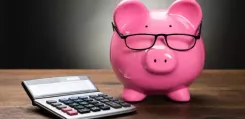Those who think this is a subject that should only be dealt with by those who have fortunes of money are mistaken. This is exactly the essential point of the theme: it is and must be for everyone.
Of course, the needs and possibilities of those who earn R$ 200 thousand per month are not the same as those who earn R$ 3,000. But the mission of financial education is to make everyone able to apply its concepts within their reality. It doesn't matter how much you earn or have. The important thing is, within your reality, of how much you earn and have, to be able to control your money and plan.
Financial education in schools
Financial education for children is a way for the subject to be introduced in people's lives in a natural way and from a very early age. Thus, when they reach adulthood and have their own money, they will have built up knowledge over time and will know how to plan financially in a more natural way.
And the perspectives on the subject in Brazil are positive. Earlier this year, the Ministry of Education (MEC) made financial education a mandatory subject in the Common National Curricular Base. As of 2020, it will be mandatory to teach financial education to children in all Brazilian schools.
The proposal is very positive, since including this subject for children from different states, with different financial conditions, increases the chances that Brazilians will know how to better deal with money in the future. And this can reflect positively on the country's economy. Thus, we will have good chances of having less Brazilians in debt and more people investing their money in a conscious way.
Investments: what they are and how to start
Another important point of financial education is to inform about the different types of investments that exist in the market. Thus, instead of just leaving the money stopped in the account, it gives the possibility to apply it in profitable assets, i.e., that will make your money yield in time.
In the financial world, an investment means to invest your money expecting a future return. That is, you invest X and in, for example, one year you expect to redeem X+200 R. If you want to start investing, you first need to organize your finances. Put down on paper what you earn per month and all your fixed expenses such as rent, electricity bill and children's school.
Then look at your expenses that are not fixed bills. For example, gasoline, trips to the beauty salon, and restaurant expenses. Evaluate which expenses are necessary and which can be reduced or even cut down. With this, you will be able to calculate how much money you have available to invest. And don't worry: you don't need large amounts of money to start investing. It is possible to start with little depending on the type of investment you choose.
Types of investment
There are two types of investments: fixed income and variable income. Fixed income assets are those in which you know how much the money will yield at the moment you invest the money. Variable-income assets, on the other hand, you have no predictability of how much and if the money will yield - therefore, the risk is higher.
For those who want to start investing, it is best to learn about fixed income assets, such as Tesouro Direto and CDB. They are safer and bring less risk to the investor. But for those who have an aggressive profile, variable income can be indicated. For example, investing in stocks or derivatives. The important thing is that you choose investments according to your investor profile. For this, count on a brokerage house, such as Clear, to help you in this process.
Financial education books
One way for you to learn more about the topic is to look for books on financial education. They can give you a broader view of the subject and help you apply the practices in your daily life.











